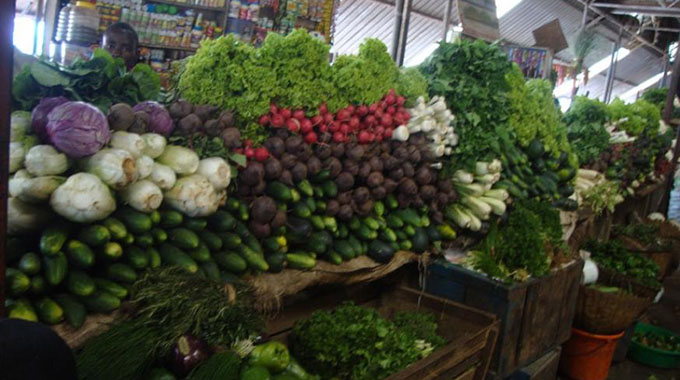Covid-19 triggers boom in fresh produce
The Herald

Martin Kadzere Senior Business Reporter
Zimbabwe is likely to see a huge demand for some of its horticultural crops in Europe after production there was badly affected by disruptions caused by lockdowns as the world battled to contain the spread of the deadly coronavirus.
There was a decline in production of peas and sugar snaps in Europe and this is likely to trigger huge demand for local produce, according to some industry players.
Green peas and sugar snaps are among Zimbabwe’s major horticultural export crops, which also include citrus, macadamia, avocado, peas, stone fruits, berries and flowers.
Edwin Moyo, director of Nhimbe Fresh Produce, told The Herald Finance & Business that demand for mangetout was showing signs of growth in Europe where production was disrupted by the pandemic, which has so far killed about 375 000 people worldwide.
“The demand for our products is showing signs of growth especially in Europe because their production was affected by coronavirus,” Mr Moyo said in a telephone interview this week. For mangetout and sugar snaps, we are likely to double the volumes.”
Zimbabwe’s peak period for mangetout and sugar snaps production is usually during winter season, defined as the period from May to August. What was important for now is to tighten safety measures to limit the spread of coronavirus at the farms, said Mr Moyo.
An executive with another horticultural firm with an annual export volume capacity of 400 tonnes, said Zimbabwean firms should take advantage of Covid-19 to further penetrate global markets.
“The coronavirus is upon us but we also have to turn the pandemic into opportunities. It is the time we can prove to the whole world that we were once a giant (in terms of horticulture production) and we can reclaim that status.”
Declared a pandemic by the World Health Organisation (WHO) on 11 March 2020, coronavirus has become a global emergency, given its devastating effects on the entire global population and the economy. The pandemic has resulted in abrupt falls in commodity prices, fiscal revenues, foreign exchange receipts, foreign financial flows, travel restrictions, declining of tourism and hotels, frozen labour market among others. Beyond its impact on human health, coronavirus is disrupting an interconnected world economy through global value chains, which account for nearly half of global trade.
Horticulture industry-promising to be one of the country’s major foreign currency earners — has been showing positive signs of recovery and exports have been on an upward trend.
Exports in 2018 rose 116 percent last year to US$112 million from US$52 million recorded in the previous year, lifted by new products which were previously not exported.
The European Union is the largest market for Zimbabwe’s horticultural products. The main EU market includes Netherlands, which accounts for 43 percent of total horticulture exports, according to Trade Map.
Other main importers from the EU region are Portugal, Italy, Spain, Ireland, Sweden, Belgium, Malta, Romania and Greece. The launch of the African Continental Free Trade Area (AfCFTA) will also create huge opportunities for Zimbabwe to export into the region, mainly to Mozambique, Zambia, Botswana and the Democratic Republic of Congo, which have lesser controls.
Other potential markets exist in Germany and Asia, particularly in Japan. Dubai is also emerging as a strong market for Zimbabwean horticultural produce. In efforts to assist local farmers to the EU, ZimTrade facilitated the participation of five companies at the Fruit Logistica Expo in Berlin, Germany in February 2018. Zimbabwe used to be one of the largest exporters of a wide range of horticultural products in Africa, supplying overseas markets including Europe and the Middle East.
For instance, citrus exports peaked in 2001 at 45 000 tonnes, being 60 percent of fresh produce output. Zimbabwe also became a valuable exporter of cut flowers, and by 2001, it was ranked as the second largest in Africa, behind Kenya, second among African, Caribbean and Pacific exporters, and was the fifth biggest exporter to the EU.
